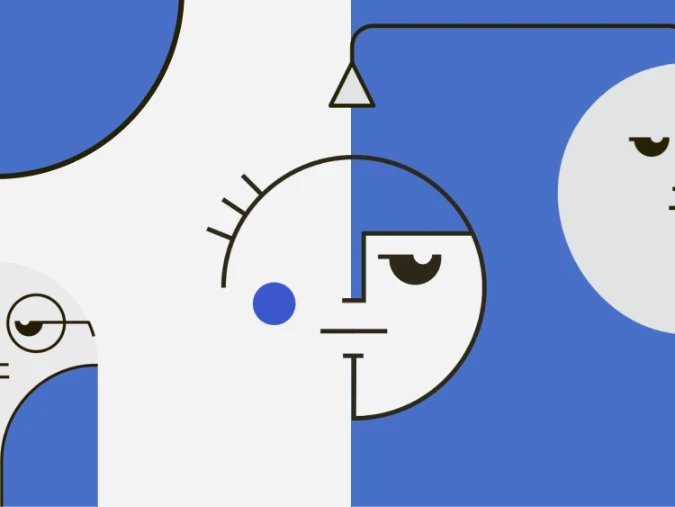After the infamous and soon-to-be-extinct personas in design, Antipersonas have emerged as a critical component for user-centred design.
This blog sheds some light on their benefits from a design perspective but also on concerns associated with this new object of study in UX Design.
Who are Antipersonas?
Personas are a tool used in design to help create more user-friendly products. They are based on research and observation of target users, and they help designers understand how real people will interact with their designs.
However, personas can be problematic. They are often created without regard for the actual diversity of users, and they can be based on stereotypes. Additionally, personas can be too narrowly focused, leading to design solutions that only meet the needs of a small group of users.
Antipersonas are a tool that can help address some of the problems with traditional personas. They are based on fictional characters that embody the negative traits of users. By understanding the worst-case scenario, designers can create more robust and user-friendly products.
Why do Antipersonas Matter in Design?
Antipersonas are fictional characters that embody the negative aspects of an honest user group. They help designers identify and solve users’ problems when using a product or service.
While personas are often used to represent the ideal user, antipersonas help identifies and redesign the user’s worst nightmare. Antipersonas can be used in conjunction with personas to provide a complete picture of the users of a product or service.
Designers often use personas to target their design efforts towards a specific type of user. However, personas can sometimes be too narrowly focused and fail to address the needs of all users. Antipersonas help to ensure that designers consider all potential users when designing a product or service.
Using antipersonas in design can help to improve the user experience by identifying and solving problems that users may encounter. Antipersonas also help to ensure that designers consider all potential users when designing a product or service.
The Good with the Bad
Regarding persona development, there are two schools of thought – those who believe that personas are essential to design and those who believe that antipersonas are a better tool.
While both have benefits and drawbacks, we believe the pros of using antipersonas outweigh the cons.
Here’s a look at the good and the bad of antipersonas:
The Good:
1. Antipersonas force you to think about your user’s goals.
When you create an antipersona, you have to think about what your user is trying to accomplish. This forces you to put yourself in their shoes and understand their needs. This is an essential step in design thinking.
2. Antipersonas help you challenge your assumptions.
It’s easy to fall into the trap of making assumptions about your users. But when you create an antipersona, you must consider what they want and need from your product or service. This helps you challenge your assumptions and come up with more innovative solutions.
3. Antipersonas can be used to assess risk.
Creating an antipersona is a great way to assess risk in your product or service development process. By identifying potential problems early on, you can save yourself a lot of headaches down the road.
4. Antipersonas help you empathise with your users.
Empathy is an essential component of design thinking, and antipersonas are a great way to cultivate it.
5. Antipersonas help you focus on what’s important.
When trying to solve a problem, getting lost in the details is easy. But when you create an antipersona, you must focus on the big picture and what’s essential to your user. This helps you simplify complex problems and find more creative solutions.
The Bad:
1. Antipersonas can be time-consuming to create.
Developing an antipersona requires a lot of research and thought. And if you’re not careful, it can be easy to get bogged down in the process. This is why it’s essential to have a clear purpose for your antipersona before creating one.
2. Antipersonas can be challenging to relate to.
Because they’re meant to be the opposite of your target user, antipersonas can be difficult for some people to relate to. This is why it’s essential to ensure that your team understands the purpose of your antipersona before you start using it.
3. Antipersonas can be dangerous if used incorrectly.
If used incorrectly, antipersonas can be dangerous. This is why it’s essential to make sure that you understand the purpose of your antipersona before you start using it.
Designing for Antipersonas
Most design teams have used personas to help them better understand their users. But what if your users aren’t who you think they are? Enter the antipersona.
An antipersona is a fictional character that embodies the opposite of your ideal user. They might be uninterested in your product or actively hostile to it. By understanding and designing for your antipersonas, you can be sure that your product is appealing to everyone, not just your target market.
Designing for people who don’t want to use your product can be challenging. But it’s important to remember that not everyone will be interested in your offering. And that’s okay!
By understanding and designing for your antipersonas, you can ensure that your product is accessible and appealing to everyone, no matter how they feel about it.
Misconceptions about Antipersonas
A few common misconceptions about antipersonas can lead to their misuse in design. One misconception is that antipersonas are the complete opposite of personas. This is not the case – antipersonas are simply different from personas in that they take into account the negative aspects of users rather than just the positive.
Another misconception is that antipersonas are only used to target user complaints. However, they can target any type of problem or user need.
Finally, some people think that antipersonas are only used in research, not in actual design work. However, they can be used in both stages of the design process – research and implementation.









